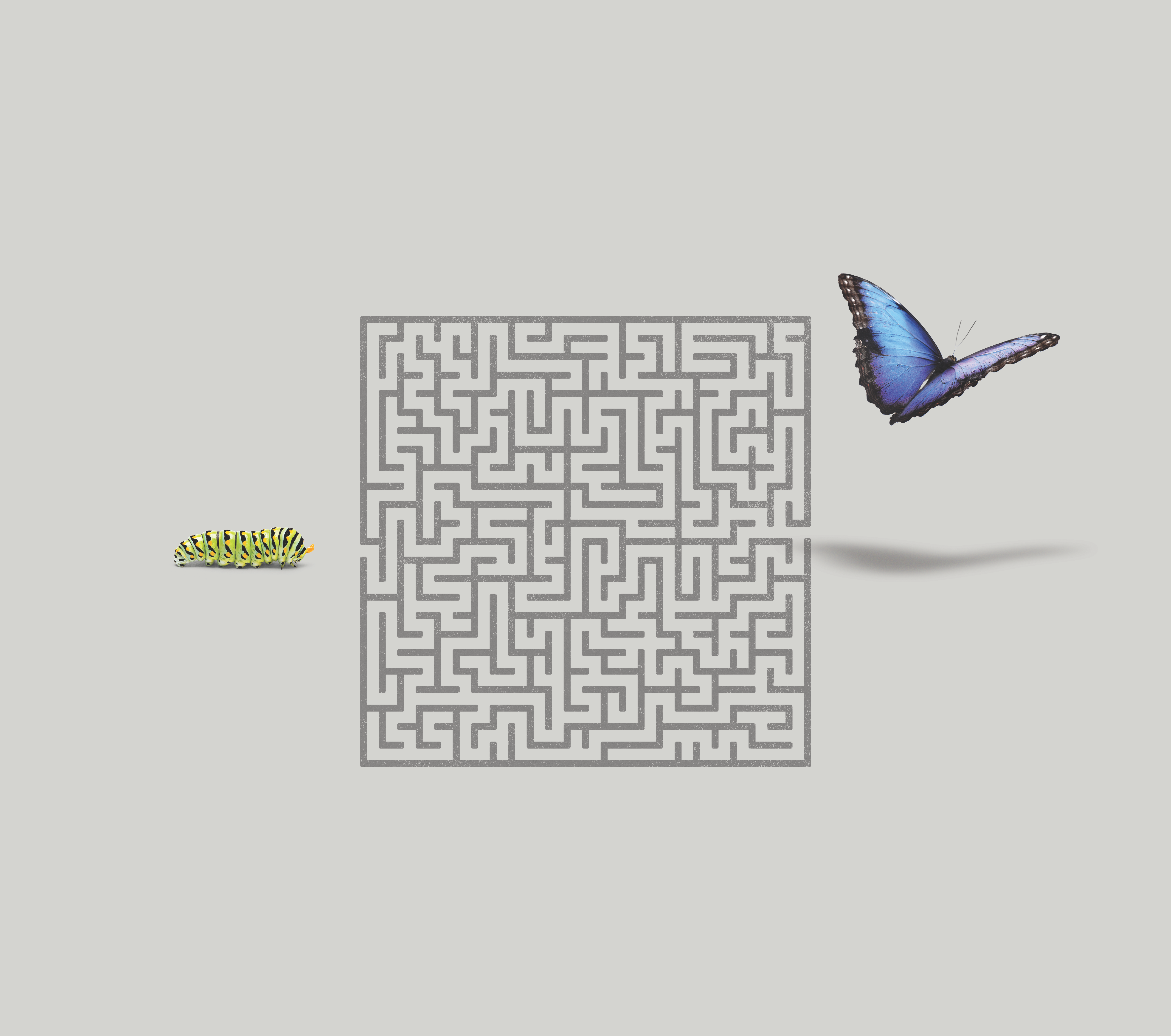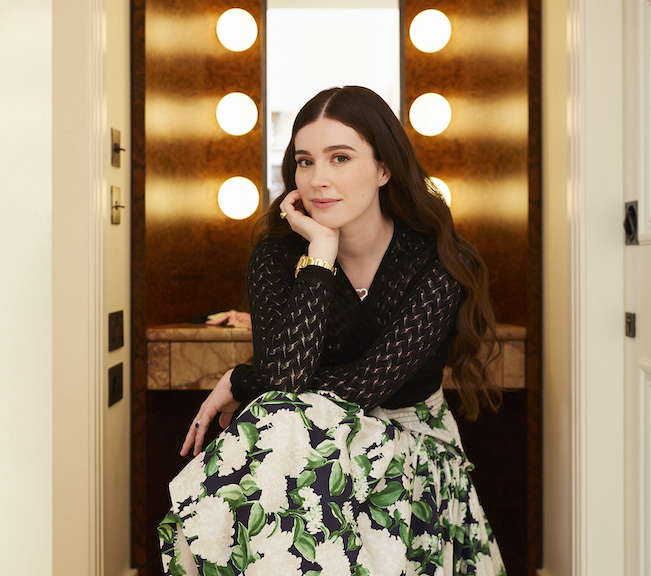Almost overnight, the Nap Dress made Nell Diamond and her company, Hill House Home, famous. How do you build on that success, rather than be defined by it? Brunswick’s Janelle Nowak-Santo reports.
Of all the emails Nell Diamond has sent, few are likely to prove more prescient than one from July 2018: “… to try Nap Dress once and see how it goes. I think if executed well it’s incredible.”
Introduced in the spring of 2019, the Nap Dress became wildly popular a little over a year later. It was comfortable enough to live up to its name (i.e., you could sleep in it), yet stylish enough to wear on a Zoom meeting—perfect, in other words, for women working from home during the pandemic. In 2020 The New Yorker, The Wall Street Journal, The Washington Post and The Telegraph all reported on the Nap Dress. After releasing a new collection of dresses in February 2021, Diamond’s brand, Hill House Home, sold $1 million worth of inventory in 12 minutes.
When she started working on prototypes for the Nap Dress in 2018, Diamond was 30 years old and had been running Hill House Home for two years—a curious career path for someone who describes themselves as “pretty risk averse,” as Diamond does. “I liked following a very specific track—in high school I applied early decision to college; in college I decided on my major in year one.” And after college, she made another choice that felt safe: work in banking. “I went into banking not just because I had the family experience of my dad [former Barclays CEO Bob Diamond] being in finance, but also because where I went to college it felt like the clear choice. Part of me thought, how could I turn down the opportunity to know I have a job offer going into my senior year? All of this led to giving banking a try. And I’m so glad I did. I always would have wondered.”
For two years Diamond worked on a trading desk at Deutsche Bank. “I knew pretty early on that I wanted to have more exposure to this thing in the back of my mind that had always been a hobby: fashion. So I decided to apply to business school and try to get a handle on what it might mean to build a career in the consumer industry.”
While studying at Yale School of Management, she started Hill House Home. “To me, the clearest opportunity was in the home space for women like me: they loved style, design, print and color, but didn’t have the budget to spend thousands of dollars on home decor and accessories.”
Today, Hill House Home has grown into a fashion and lifestyle brand valued at more than $150 million. That growth has been driven by Hill House Home’s creative marketing, distinctive designs and its ability to build a loyal customer base. Also powering its ascent, of course, has been the wildly popular Nap Dress, which now comes in 24 different styles—one of which Brunswick Partner Janelle Nowak-Santo wore in her recent conversation with Diamond.
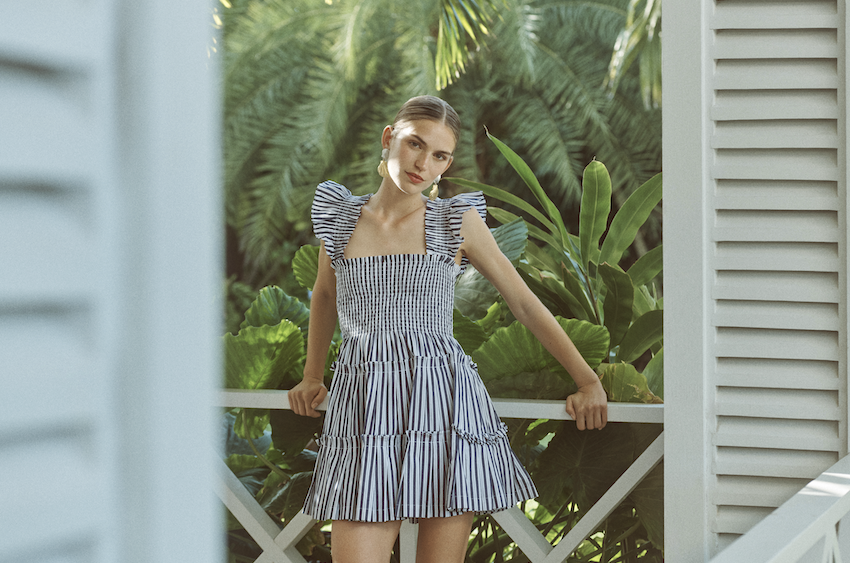
The most successful entrepreneurs all seem to have had someone confidently shoot down their idea—did that happen to you?
All the time! I feel like you don’t get anything good without resistance. I was talking about this with some of my founding employees and we were saying that a huge part of entrepreneurship is delusion. We believed that what we were doing was special when really nobody else did, and when the numbers weren’t special either, at the beginning.
Every time we heard, “oh, it’s just a silly business,” or “it’s never going to be anything,” we were so delusional we just didn’t believe them. They were wrong and we knew it. Our confidence must have come in part from having each other, we all felt this kind of magic. A good dose of delusion is important.
How was the idea for the Nap Dress born, what was the creative inspiration beyond the desire to nap anywhere at any time?
I spent a lot of time the first couple years really tinkering in the idea of viral organic marketing. We were such a small team, four people, we had a tiny office in a tiny store on Bleecker Street in New York City and we loved seeing what people reacted to.
Something we’ve always been good at, even with all the delusion, is that we’re willing to be wrong. I remember we were obsessed with this sleep bundle we came out with. It paired bath salts with certain days of the week, had these gorgeous quotes about sleep, there was an essential oil roller that could help calm you, an eye mask—we put so much time and effort into it, it was objectively beautiful. But we put it out in the store and people never picked it up. We had to really sell that thing. They liked it, it wasn’t a bad product, but it was not getting people’s energy.
We appreciated seeing that though, because it doesn’t matter how much we like a product, we’re not the customer. We need to create things that genuinely excite people, things that they’re drawn to.
The Nap Dress was one of the many products we created in that two- or three-year period and it was the one that hit. It was the first thing people went to in the store. They’d try it on and say, “Oh, I look amazing.” The next person tried it on, “My waist is so good in this.” The next week their friend comes in and says, “My friend wore this to a dinner party, and I have to have it.”
We created all these things we felt really excited about, but let the customer choose what they agreed with us on. And that was the Nap Dress in particular.
In hindsight, I can see why it did so well. It was also the product I was most excited about. It really came from my personal desire to look polished and put together, which makes me feel my best and ready to tackle the day, but still be comfortable. I’ve never felt my best in sweatpants and a T-shirt, I feel sluggish and depressed. At the same time, I don’t want to be wearing a dress that’s so tight I can’t sit down, or I get home at the end of the day feeling like I just have to get it off. So that was how the Nap Dress came to be, and then testing different types of smocking and finding a type that made me feel cinched in, but not uncomfortable.
“I try to stick to this concept that even if it is this one thing that we’re really good at, that’s enough. Because it still has a use in people’s life, and it can be really powerful.”
When the Nap Dress went viral, how did you seize the opportunity or, conversely, avoid being a one-hit wonder?
I never realized until it happened to us how quickly people would warn you about being a one-hit wonder. I remember somebody said that in an interview a month after a really big day for the Nap Dress; I thought we’d have a year before being asked that.
I still don’t even know if we’re past that. We released our first Nap Dress almost five years ago and we still sell them like crazy. I try to stick to this concept that even if it is this one thing that we’re really good at, that’s enough. Because it still has a use in people’s life, and it can be really powerful.
Anyone can go viral and you have so little control over it. People think you can manufacture it, on social media everything is called “the viral cheesecake recipe,” or “the viral legging,” but it’s not actually viral, someone just wrote that online. The important thing about virality is you can never plan it. It just happens. You could put yourself in a situation where it’s more likely, by posting a lot and knowing your customer, but the actual hard thing is taking advantage of that virality to build something really meaningful for your customers.
We had a moment when the business transformed overnight. We had our biggest year of growth. We grew 500% year-over-year, the next year we grew 300%, and the next year we grew 300%. Our big lesson was in saying to ourselves, “We have this opportunity, we know that some of it is internet magic, but what are the parts of this that happened for a reason and how do we stay true to our mission: making women feel amazing in the clothes they wear?”
And I think we’ve mostly gotten it right. There are definitely things we’ve gotten wrong, but mostly, when we stick to that mission, it’s worked.
Thinking about digital marketing and the success you’ve had building a brand online, what has been your greatest achievement?
We had something really beautiful happen. The first three years of our business we had no budget for marketing, we couldn’t spend any money on it. This was 2016–2017 when people were pouring money into marketing on Facebook and getting amazing returns. There’s no doubt in my mind that if we had a budget, we would have spent it—but it can be a double-edged sword if you’re just throwing money at the algorithm and letting it decide for you.
So we had to focus on what hit organically, which is much more difficult than what hits on paid. By the time we had a budget for paid advertising, we already had a playbook: Put content out into the universe, if it starts performing well organically, put a ton of paid budget behind it. It was the same thing we did with our product strategy: Put a lot out there, find what hits and then invest significantly.
The lesson is around flexibility and letting the organic lead your strategy as opposed to the paid. I’d rather use TikTok and Instagram’s algorithm to help me find audiences than create content for me. It’s picking and choosing where you can use machine learning to benefit the business—not using it everywhere, and figuring out what you’re best at. And what we’re best at is creating things that have organic lift.
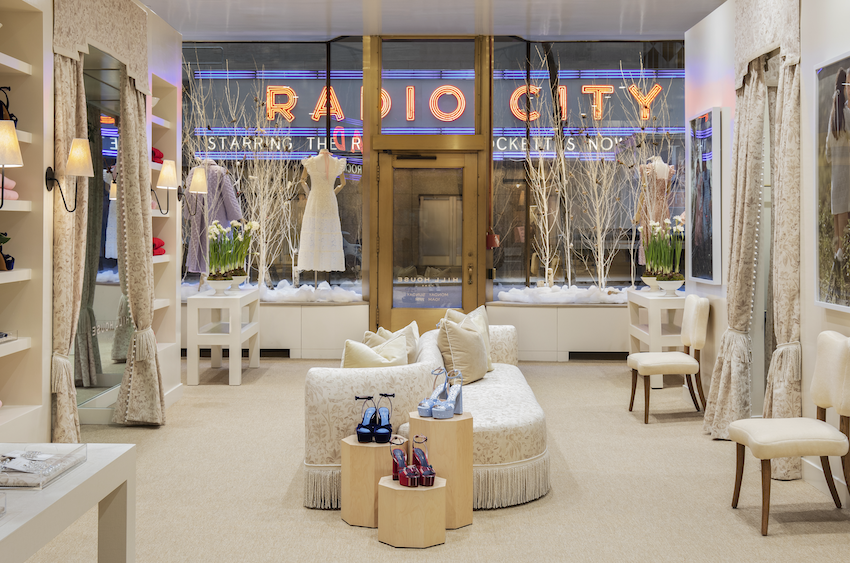
Have you applied that same digital strategy to your retail locations? And how does your brick-and-mortar business align with your digital-first brand identity?
With stores it’s a little trickier because there aren’t many ways that you can test a market in-person before you invest in developing a store. We do pop-ups and trunk shows to test the in-person appetite for our product; pairing that with data from our business can be really helpful.
I tend to lean the most on customer surveying. And I mean that in a very informal way, literally going into stores and asking people if they’ve heard of Hill House, where they shop and go on vacation. Because I don’t think any one of these things captures the whole picture. But I think brick-and-mortar is so crucial to any business that’s hoping to sell physical products to customers. That’s how I first fell in love with every brand I’ve ever shopped at. I worked retail as a teenager and in my 20s. There’s nothing like the power of being in a store and with our customer. I try to do it as much as possible.
At the same time, we have a fiduciary responsibility to shareholders, and retail is incredibly expensive and risky. So we try to go carefully into markets, spend very thoughtfully and make sure that the economics really work. We need four-wall profitability in every store within the first year. We need to be careful about our build-out costs, and if something isn’t working, we want to be kind of quick to end it.
Luckily, everything is working right now. But I think, and this is true in everything we do, too much ego can get in the way. So we’re trying to find a balance of what works for the business and what works for our customers.
Your products are frequently referred to as “cottagecore,” what does that mean to you? Who is the quintessential Hill House Home customer?
I hear the “cottagecore” thing all the time. Everything is a “core” now, right? The other day I heard somebody call us “napcore,” which I thought was cute and interesting. We pick and choose based on what feels right. The dress I’m wearing right now definitely feels “cottagecore,” but we try to stay true to the wide range of customers we have—our demographic is so broad.
We have women my mom’s age wearing our clothing, and we have Gen Alpha, 13-year-olds who are wearing it to Bar Mitzvahs. I would say the core of our customers are young working moms in America, but I like the idea of being able to appeal to as broad a group as possible.
“Every good thing that’s happened at Hill House has been a group project with our customers—that’s particularly true for ‘drop’ days. We created it together and it happened so organically.”
“Drop culture” has become synonymous with Hill House Home. How did it become a critical component of your brand and how do you think about it?
Every good thing that’s happened at Hill House has been a group project with our customers—that’s particularly true for “drop” days. We created it together and it happened so organically.
The first time we ever “dropped” something we said, “Noon on this day,” simply because that’s when we were putting it on the site. But then we could see that there were 10,000 people on the site. And we were like, “Wait, 10,000 people are here, let’s entertain them.”
That was the first Nap Room. We put up a playlist. For the next one we thought they should be able to chat—people had been commenting on our posts, things like “I want to know what size I am in this.” Again, it’s that case of putting something out there, seeing how people react and really running with it.
“Drop” days have become almost an inside joke with our original shoppers. It’s mostly returning customers that shop on “drop” day, and new customers mostly shop afterwards. So we merchandise as much as possible to make sure the things people want most don’t sell out on “drop” day. But it’s hard to know.
You’re running Hill House Home while co-parenting three small children. Any advice for others navigating this path?
My friend asked me recently, “Nell, when you married your husband, did you know he was going to be such an involved dad?” [laughs] I’m very lucky that my husband is an equal partner in parenting our three little kids. I couldn’t be doing what I’m doing if he weren’t.
I’m also really lucky to have the support of my parents. They live in New York and my mom is at our house every single day. When I think of my greatest privileges, at the top of the list is that support from my parents at this time in my life. There’s just no way it works otherwise.
And having the team at Hill House—we’re all women and the entire executive team has young kids. My COO and I were both pregnant during COVID, our biggest growth year. She has three little kids too. Surrounding yourself with people in a similar position is really helpful. It’s the end of the school year right now, and she and I are trading off going to writer’s workshops and zoo visits. That’s just what we schedule around. It’s never felt anything but a normal part of life to have all the million things we have to do.
“PRE-RAPHAELITE CORE”
Hill House Home’s products are often described as “cottagecore,” which has been defined as an “aesthetic and lifestyle movement that celebrates simple living in the countryside.” Diamond has half-jokingly offered another label to describe her brand’s style: “Pre-Raphaelite Core.”
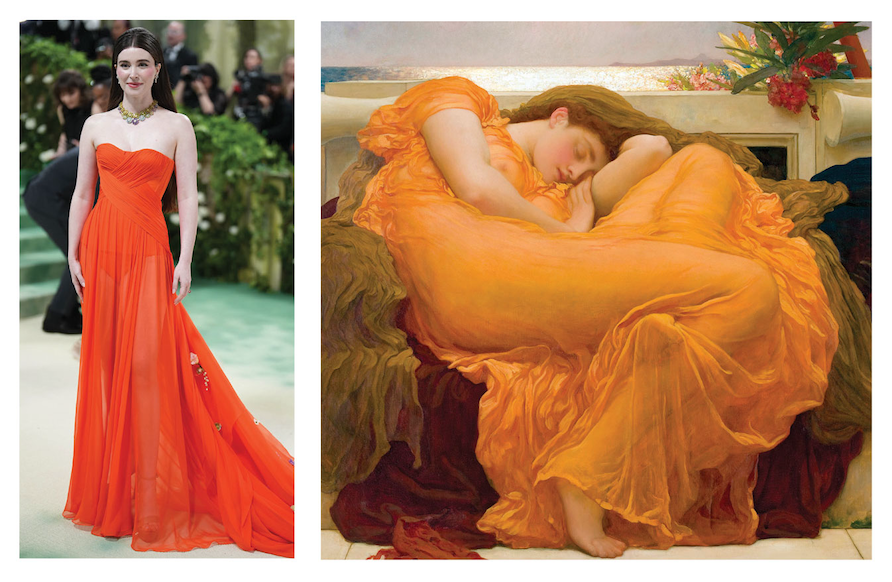
The Pre-Raphaelites were a group of English artists in the mid 19th century, who, as their self-appointed name suggests, looked to return to the colors and compositions that they felt art had possessed before Raphael’s influence. Among the inspirations Diamond has cited for the Nap Dress include the Pre-Raphaelite painters John William Waterhouse and John Everett Millais. The dress Diamond wore to the 2024 Met Gala was inspired by another Pre-Raphaelite: Sir Frederic Leighton’s painting “Flaming June.”
More from this issue

Transformation
Most read from this issue
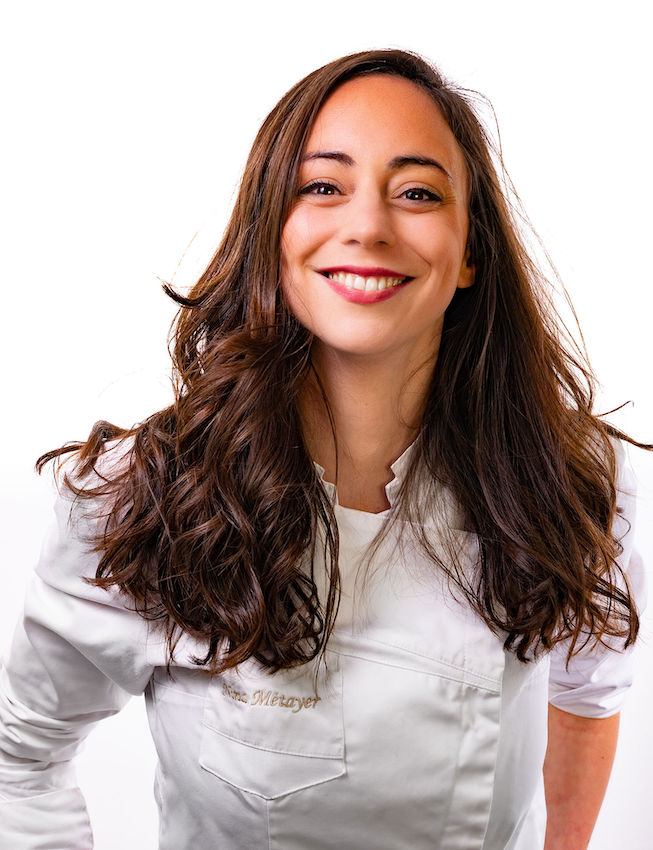
The World’s Best Pastry Chef
